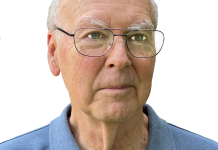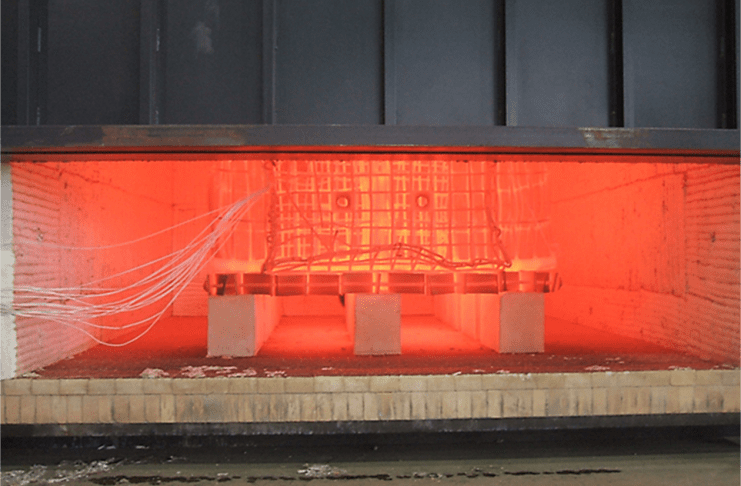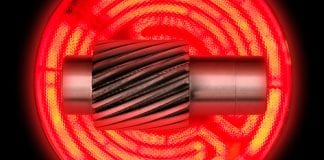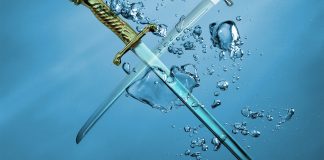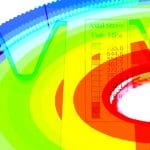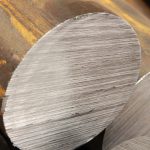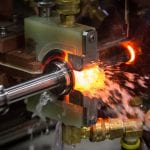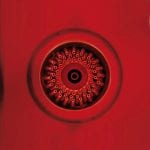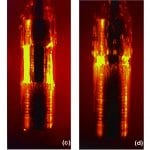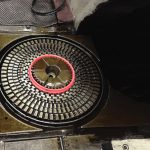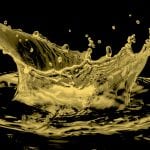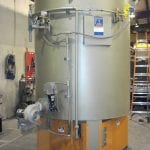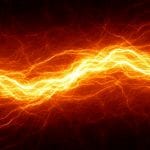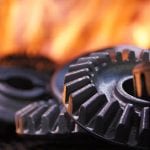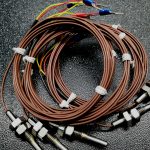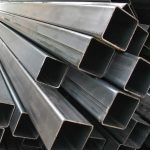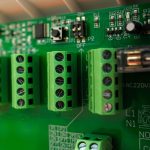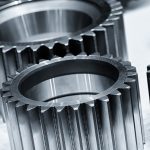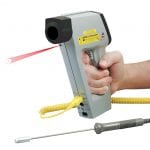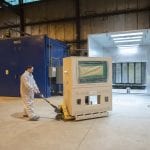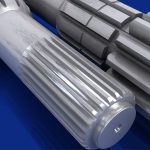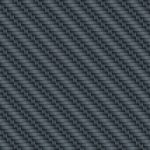Selection of Oil Quenchants for Heat-Treating Processes
Modern quenching oils offer a wide range of capability and performance. The selection of the proper quench oil is critical for proper heat-treating operations....
Typical Heat Treatment Defects of Gears and Solutions Using FEA Modeling
Steel gears are heat treated to obtain enhanced properties and improved service performance. Quench hardening is one of the most important heat treatment processes...
Efficient Gas Heating of Industrial Furnaces
There are various types of high-efficiency gas burners and radiant tubes currently on the market, and economic tools can be used to assess investments...
Enhanced Properties of 17-7 PH Stainless Steel
Background
Precipitation-hardening (PH) stainless steel grade 17-7 PH is classified as a semiaustenitic stainless steel used extensively in aerospace and finding new applications in the...
Troubleshooting and Prevention of Cracking in Induction Hardening of Steels: Lessons Learned –...
One of the most common applications of induction heat treatment is the hardening of steels, cast irons, and powder-metallurgy materials, developing an attractive blend...
High-efficiency gas burners make good economic sense
Even though the price of natural gas is currently low, the investment in high-efficiency gas burners makes sense economically. This article discusses different types...
Understanding the Cooling Curve Test
When a hot component comes in contact with the liquid quenchant, there are normally three stages of quenching. There are exceptions to this, which...
Induction hardening of cast irons
The success in induction hardening of cast irons and repeatability of obtained results are greatly affected by a potential variation of matrix carbon content.
Controlling Distortion in Heat Treatment Through Press Quenching
Introduction
Press quenching is a specialized quenching technique that may be utilized to minimize the distortion of complex geometrical components during heat treatment1. Distortion is...
An In-Depth Look at Polymer Quenchants
Quenching of various alloys to achieve mechanical properties has been an area of scientific research for many years. Using polymer quenchants has proven to...
The versatility of the pit furnace
Top-loading furnaces, commonly referred to as pit furnaces, have played a major role in the heating treating landscape for the last century or longer....
Computerized Design of Straight Bevel Gears with Optimized Profiles for Forging, Molding, or 3D...
Straight-tooth bevel gears are the simplest type of bevel gears that can be used for power transmission between intersecting shafts. They are commonly referred...
Reducing measurement error when making thermocouple transmitter connections
The thermocouple (TC) is a thermo-electric device used to measure temperature and nearly two-thirds of U.S. temperature measurement makes use of thermocouples. Most industrial...
Gas carburization techniques
A comparison of conventional and accelerated methods for surface hardening
Using the correct thermocouple
The principles behind how and why a thermocouple functions were beginning to be understood in the early 1800s with most significant developments taking place...
Advantages of wire-arc additive manufacturing
The concept of additive manufacturing has been around for a century, but with the advent of sophisticated software and robotics, the process is fast...
Steel strength comparison: Tensile, compression, torsion, bending, shear
The strength of steel is commonly characterized by using engineering tensile strength. Typically, a dog-bone shaped test bar is pulled in the axial direction...
Improving the mechanical properties of medium carbon steel
Quenching is one of the major processes of heat treatment of medium carbon steel that aims at improving its mechanical properties. However, the effectiveness...
The PLC-based industrial temperature control system: Design and implementation
Targeting the problem of slow response and low accuracy of the automatic temperature control system for material processing and boiler heating, a new design...
Carburized steel mechanical properties: Case tensile strength
Editor’s note » This is part one of a three-part series on carburized steel mechanical properties.
Carburizing is a mature heat-treating process commonly used for...
Infrared Temperature Measurement Theory and Application
An infrared thermometer measures temperature by detecting the infrared energy emitted by all materials at temperatures above absolute zero, (zero degrees Kelvin). The most...
Selecting the correct industrial ovens for finishing applications
Finishing is defined as “completing the manufacture or decoration of a material or product by giving it an attractive surface appearance.” In industrial applications,...
Stress Generation in an Axle Shaft during Induction Hardening
Introduction
Induction hardening of steel components offers a fast heating rate, high efficiency, and the ability to heat locally. Induction hardening is a highly nonlinear...
Gas vs. Liquid Quenching: A Direct Comparison in Hardenability to Reduce Distortion
Introduction
Hardenability is the ability of steel to partially or completely transform from austenite to some fraction of martensite at a given depth below the...
Heat Treatment of Large Components
Large gear components can be offered in many applications such as marine, wind power, steel rolling mills, power plants, transportation, railroad, aircraft, cement crushers,...
Mechanical properties and thermal conductivity of lightweight and high-strength carbon-graphite thermal insulation materials
Thermal insulation composites are widely used in civil and military applications; however, it is difficult to achieve the synergy of multiple technical objectives such...
How Gears Fail
Heat treatment plays an important — some would say critical — role in gear manufacturing. Therefore, there is a need to better understand, from...
Hardening of Powder Metallurgy Parts 101
Powder metallurgy (PM) is unique in that one has the ability to create a process system (alloy, process steps, and secondary operations) specific to...
Temperature sensor selection: The basics of temperature measurement using thermocouples
You are probably somewhat familiar with the thermocouple, or you wouldn’t be reading this article. But there are important points about thermocouples that must...
The Advantages of an All-Metal Vacuum Furnace Hot Zone
For more than 70 years, the vacuum furnace has been available for metal processing requirements, and is widely accepted as the ideal equipment for...
Gas Nitriding of Titanium
Interest in solution gas nitriding and diffusion of nitrogen into the surface of titanium alloys as a means to inhibit adhesive wear (galling) while...
Case Hardening Basics: Nitrocarburizing vs. Carbonitriding
Confusion surrounding the case-hardening techniques of nitrocarburizing and carbonitriding prove the point that it's easy to get lost in the nomenclature behind heat-treating processes.
That...
Maintenance Procedures for Vacuum Furnaces
More gear manufacturers need to add vacuum furnace machines to the shop floor and include this procedure in the overall manufacturing process. As vacuum...
Recent progress in three areas of induction-heating technology
This paper introduces recent research progress of induction heating technology at Baosteel, specifically the development of full coil static induction heating technology of the...
Filament-Wound Composites Have Specialized Curing Requirements
Filament winding is a manufacturing method for making tubular and cylindrical shapes of extreme strength and light weight. The technology involves wrapping a mandrel...
Tooth-by-Tooth Induction Hardening of Gears (and How To Avoid Some Common Problems)
Tooth-by-tooth induction hardening of gears is a complex process. Variations of any of kind may be sufficient to cause the process to run out...
Carburizing and Nitriding Treatment Modeling
(Photo courtesy of Advanced Heat Treat Corp.)
Carburizing and nitriding treatments have the same goal: increase hardness on the surface while keeping the core ductility....
A study of temperature effect on properties of nitride layers on X37CrMoV51 tool steel...
The paper concerns the effect of annealing time and temperature on the properties of the nitride layer on X37CrMoV51 tool steel used in the...
Case Study: Laser Hardening
To increase the hardness of a steel material, there are basically three required steps in the hardening process. Step one is to heat the...
Heat treatment of steel measurement of hardness and tensile strength
The heat treatment of steel changes its microstructure, its hardness, and its tensile strength. These issues are of utmost importance as they are closely...





